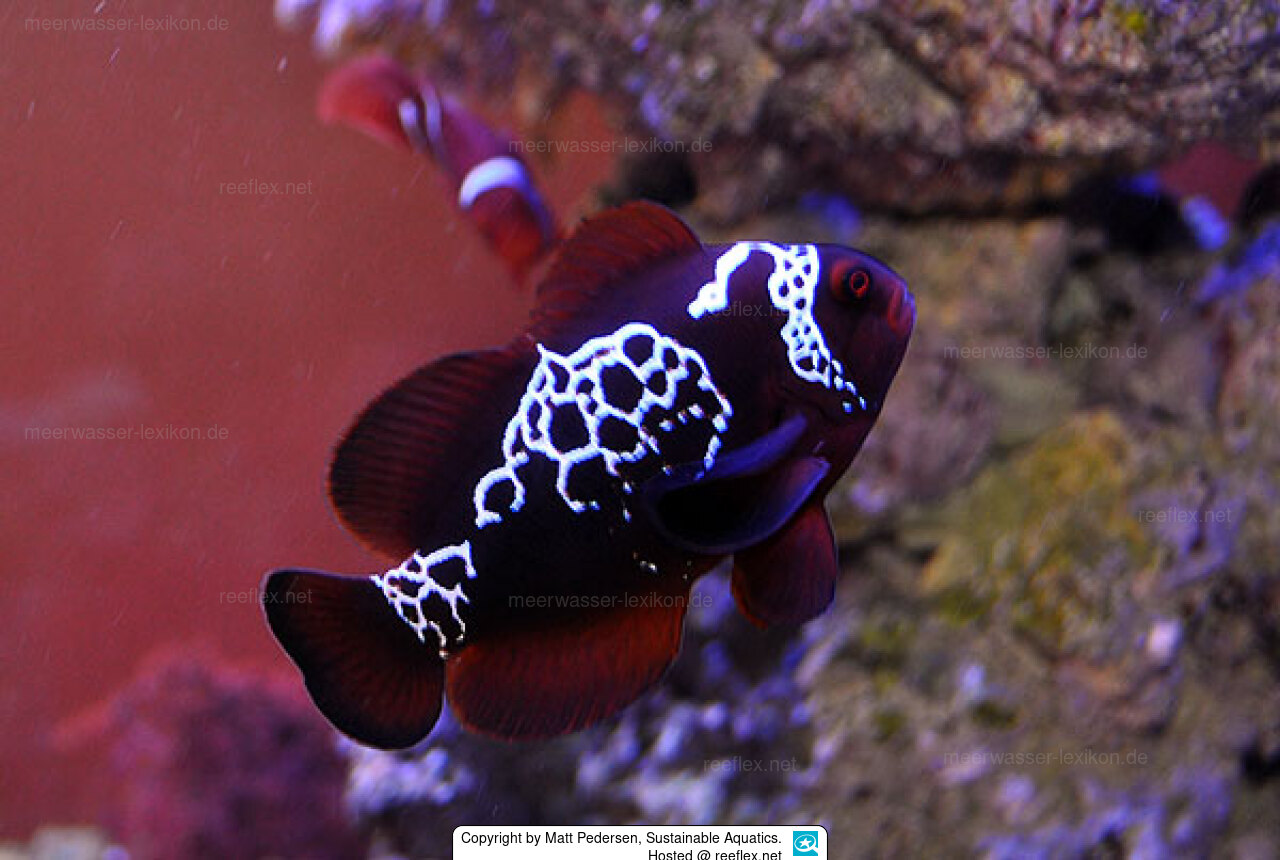Info
Matt is also an associate senior editor and publisher of CORAL magazine / Reef2Rainforest.com, the English version of the Magains Coral.
This Amphiprionist not a so called designer animals, the fish comes from the sea around Papua New Guinea and Matt strives to breed this rare genetic abnormality and to maintain this species.
Matt reports a lot about the breeding of this large and extreme luminous fish on his homepage http://www.lightning-maroon-clownfish.com/
Here some interessting parts for our communication:
"Picture Nr. 4 shows the development of the pattern over a roughly 2 year period....these babies are born with large white splotches that break up and change as the fish grow.
I might also suggest adding an image of the original wild fish - http://www.lightning-maroon-clownfish.com/wp-content/uploads/2011/08/DSC_0107.jpg - that's the original broodstock, and the 2nd individual found (this was the first fish collected, in 2008, by Steve Robinson - http://reefbuilders.com/2008/09/21/wicked-maroon-clownfish-emerges-from-the-png/ - you'd have to track him down to see if you could use his photos.)
The English text mentions that these fish are "not designer animals"; that's not entirely true perhaps. These fish exhibit a genetic mutation; this one appears to be a dominant trait, but it's not dissimilar from finding an Albino. As it turns out, the Picasso Percula actually is based on a mutation found in the wild as well (the original Picasso perc male was collected from the Solomon Islands). The Picasso Percula is the phenotype (appearance / look) of a fish which carries one copy of the partially-dominant gene. If you mate two Picasso Percula together, you get 25% wild type percula, 50% Picasso Percs, and 25% Platinum Percs; Platinums are the homozygous (double-dose, two allele) version of Picasso.
Coming to understand some of the origins of these genes has changed my point of view greatly on these "designer" animals, because they are often more natural than we give them credit for. To think about it another way, if you are familiar with the "OB" (Orange Blotch) mutation in certain Mbuna from Malawi, this again is just a single mutant gene."







 Matt Pedersen, Sustainable Aquatics, USA
Matt Pedersen, Sustainable Aquatics, USA



































































